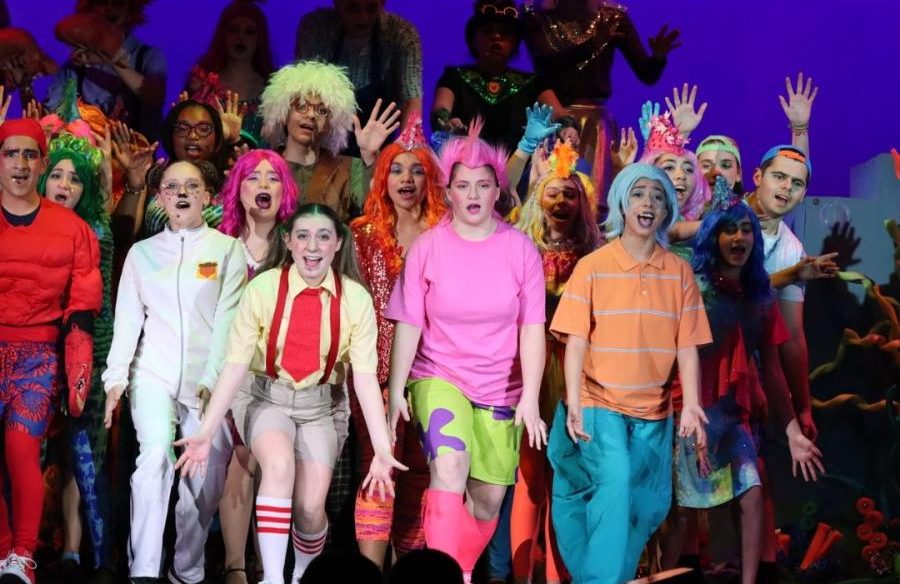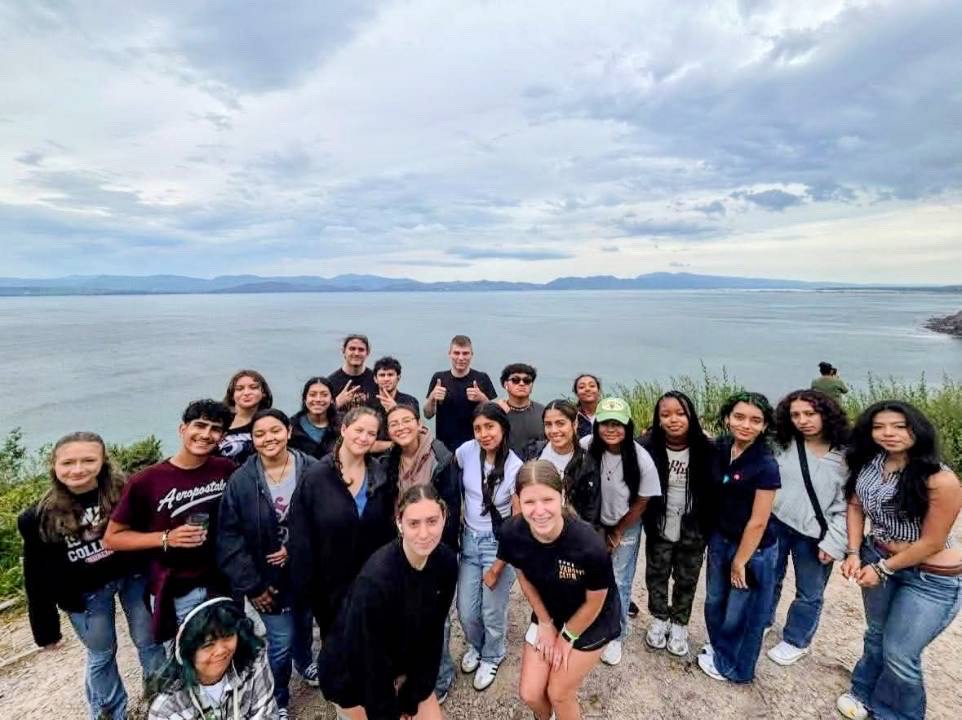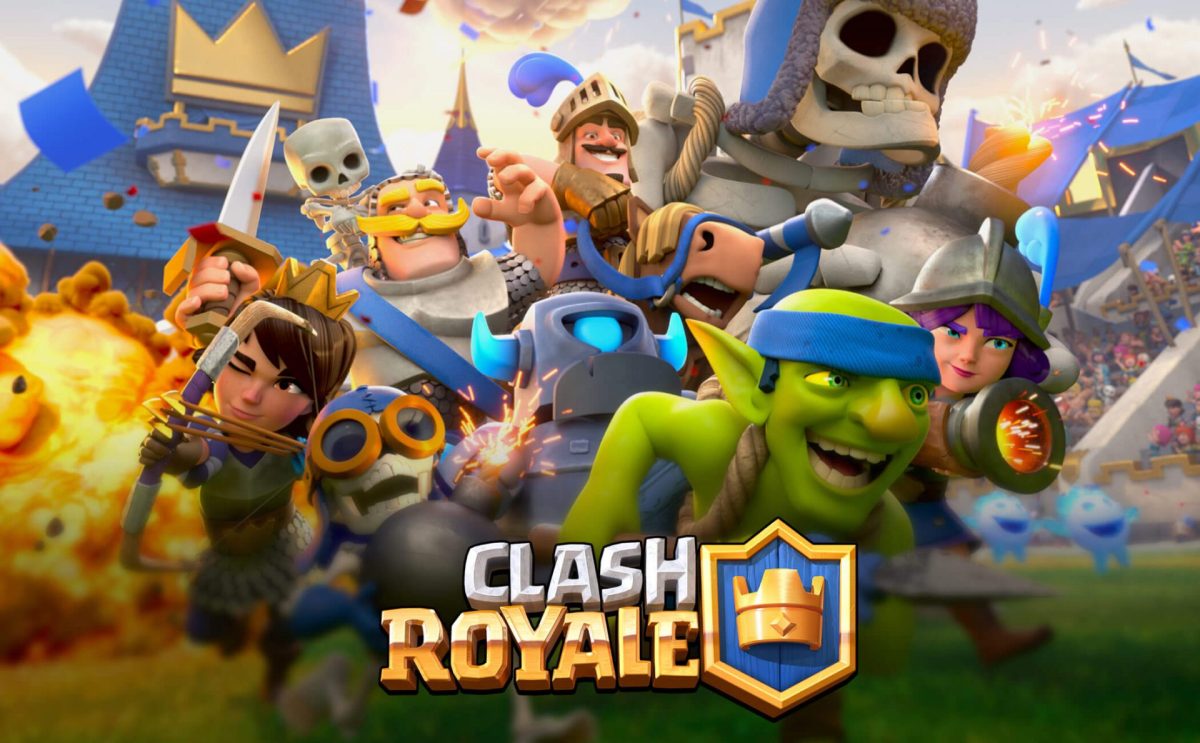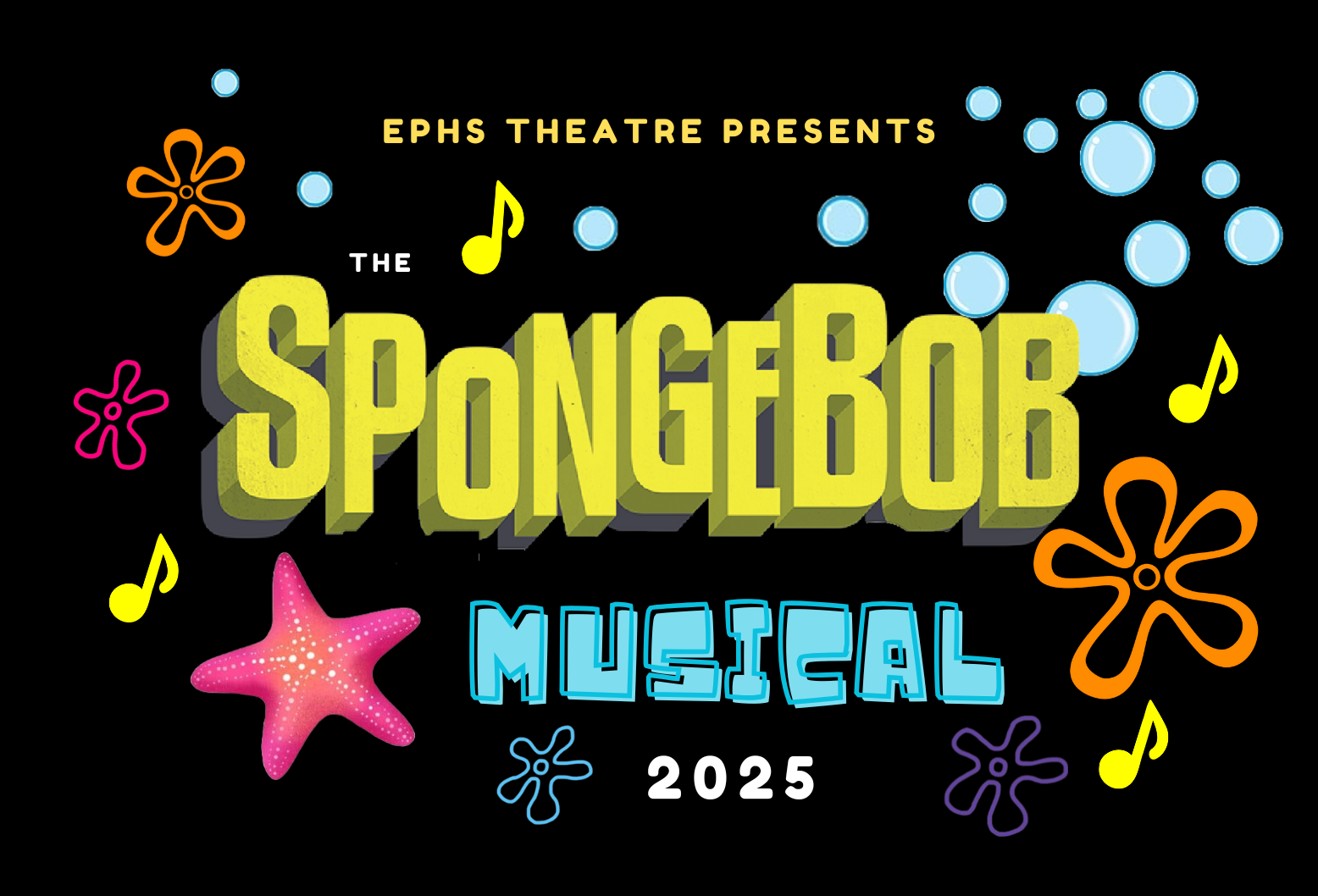
With Spring just around the corner, the EPHS auditorium was bustling with efforts to prepare and perfect this year’s Spring Musical: SpongeBob. The adaptation of the iconic cartoon follows SpongeBob, Patrick, Sandy, and all the other famous characters as they attempt to save Bikini Bottom 24 hours before their town is destroyed by the volcanic doom of Mount Humongous. While silly in nature, the musical adaptation is full of comedic and heartfelt moments that bring the citizens of Bikini Bottom to life on stage.
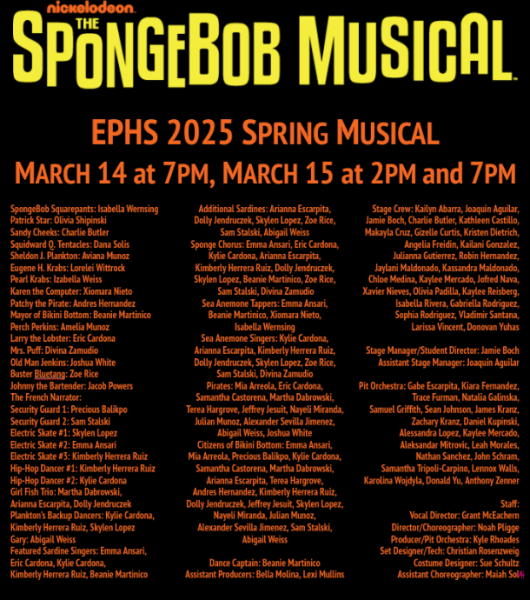
The songs in this musical were composed by a medley of famous songwriters such as David Bowie, Panic! At The Disco, Cyndi Lauper, Sara Bareilles, and John Legend. This musical debuted in 2016, and has been appealing to nostalgic viewers of the TV show since.
Auditions began back in December, and starting after Winter Break, Cast, Crew, and Pit went to work. Cast rehearsals were typically every day, including weekends, with weekday vocal rehearsals from 3-5 and acting/dancing rehearsals after that until around 7 or 8. Crew work days were Tuesdays and Thursdays from 3-6, and, similarly, the Pit Orchestra practices were on the same days as Crew, from 3-4:30. So let’s take a behind the scenes look at all aspects of the EPHS 2025 musical: singing, dancing, acting, Crew, costumes, and Pit.
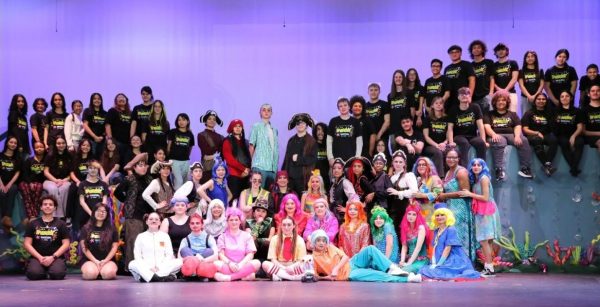
Singing
The Cast’s vocal director was Choir and Guitar teacher, Mr. McEachern. This was Mr. McEachern’s 10th production at EPHS, and he worked hard to make sure the SpongeBob ensemble was as vocally prepared as possible. Every musical is different, and therefore, Mr. McEachern requires different stylistic choices from show to show. For example, Chicago required a mature jazz style, and Matilda required a bright, happy, child-like tone.
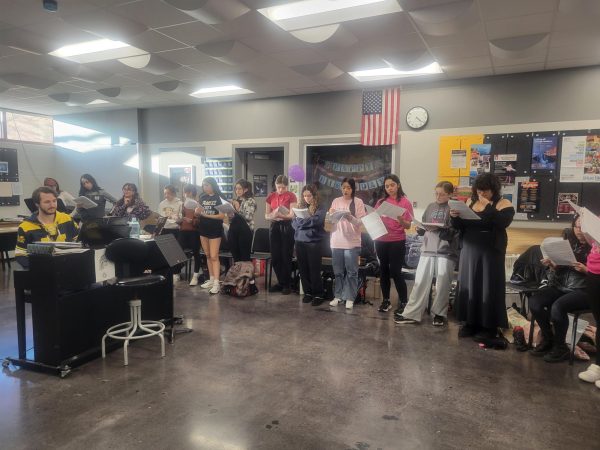
What qualities of singing did you emphasize to make our Cast sound like they truly belonged in Bikini Bottom?
M: The music in SpongeBob is very high-energy and often is higher pitched, so we work on accessing a lighter-feeling; a more agile tone that I’ve called our “musical theatre voice.” This helps us keep the stamina necessary to sing all of these active and energetic songs without blowing out our voices and having to croak through our last performance. Also, given the cartoony nature of these characters we have been using more gruff or nasal sounds depending on the song.
These different stylistic choices mean that each show varies in difficulty for the Cast. Some styles of voice are easier to produce on older teens than younger and vice versa. Additionally, such a specific and iconic character style adds to the show’s difficulty as well.
Is this show more vocally challenging because of the character than previous productions you have been involved in?
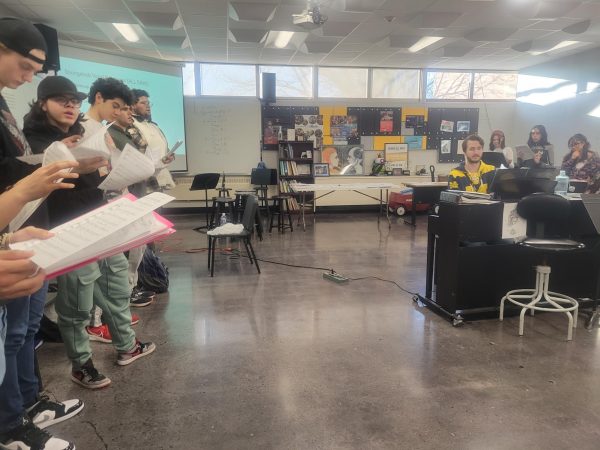
M: This is definitely one of the more vocally challenging musicals we’ve done to this point. There are a lot of ensemble songs (where everyone in the Cast is singing) and there are a lot of harmony parts which are more difficult and time consuming to learn. In most musicals, the ensemble sings in 5-10 songs but in SpongeBob, the ensemble has a part in 15 different songs. Additionally, the music for this show was written by a large collection of different pop artists, so every song is very distinct in its style and harmonic structure making it tough to learn. This group has been doing a great job keeping their energy up and learning all of this music!
Dancing
The Cast of SpongeBob had two main choreographers: Noah Pligge (also the Director) and Maiah Sol. Maiah graduated from EPHS in 2023 and was also the Assistant Choreographer for the 2024 production of Chicago. She choreographed all of the dance-heavy numbers in both shows. After Maiah taught a number to the ensemble, it was the Dance Captain’s job to make sure all of Cast knew the dance and help them when needed; this show’s Dance Captain was junior Beanie Martinico. Maiah is a diverse and skilled dancer and choreographer, but both of the shows she has assisted with have been vastly different, and she herself was a Cast member in Matilda.
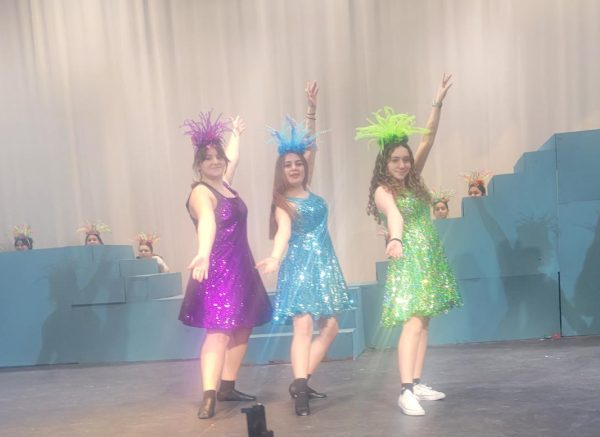
What was the choreographing process for the SpongeBob dances as opposed to Chicago?
M: The process for choreographing this show was actually a lot more challenging compared to Chicago! Chicago was a very dance-focused musical with lots of room for technical elements, whereas SpongeBob is typically a lot simpler in terms of movement. I found it difficult at times to choreograph dance steps that were simple, yet fit the style of SpongeBob, while also still being effective and impactful to the audience in the same way. This was overall an amazing experience that pushed me as an instructor and one I’m grateful for!
In between rehearsals, Maiah and Beanie often collaborated on tutorial videos for the Cast and figured out which sections needed to be adjusted or changed to best suit the needs of the ensemble.
As Dance Captain, what things did you do at every rehearsal to help the ensemble be successful in their dance numbers?
B: I mostly just tried to help anyone who needed it. I started every rehearsal with a full-body warmup with the Cast to put them in a mindset for dancing and make sure they were ready to move their bodies in a safe way. Sometimes if a number needed help, I pulled a small group out to the hallway to work on it while something else was going on, or Maiah and I made notes of things that needed to be worked on. I wanted everyone to just feel confident in these dances!
The main reason why these dances were so challenging for the Cast was not only the actual moves but keeping the caricature-like persona as well. No show that this Cast has done has been remotely similar in terms of what needed to go into a dance.
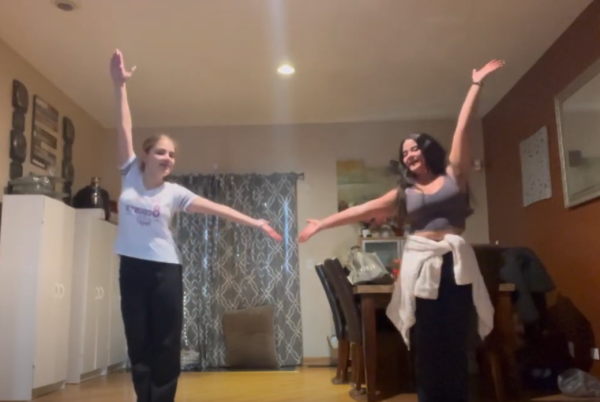
This style of musical theater is very different from your usual dances. Where did you get the inspiration for all these numbers?
M: I remember watching a musical production of SpongeBob back in 2023, and I instantly knew I’d love to choreograph for it one day. I took some inspiration from some of my favorite productions of SpongeBob to create the vision I had in my mind. When it came to executing it, it was a matter of seeing what worked and didn’t work as far as difficulty for our Cast members. Once I got a good idea of our dancers’ strength, I got to put my own flair on it!
Acting
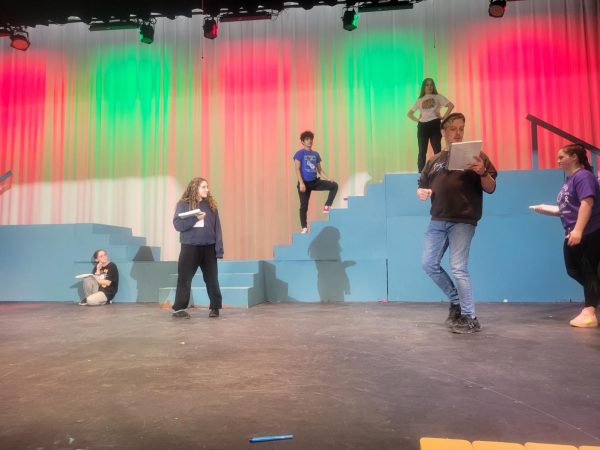
The Cast’s Director was Regina Dominican teacher: Noah Pligge, who was back for his 28th production at EPHS. He put an extremely large emphasis on character and growth to the ensemble- even the unnamed characters. They worked on progressing the emotion and story through their songs, developing a story for themselves, and overall making sure that they weren’t just standing there while someone else was talking. For the lead characters, such as Squidward, Pligge put a heavy emphasis on making sure they embodied their iconic characters. Senior Dana Solis took on that role and worked to perfect her performance as everyone’s favorite grumpy sea creature.
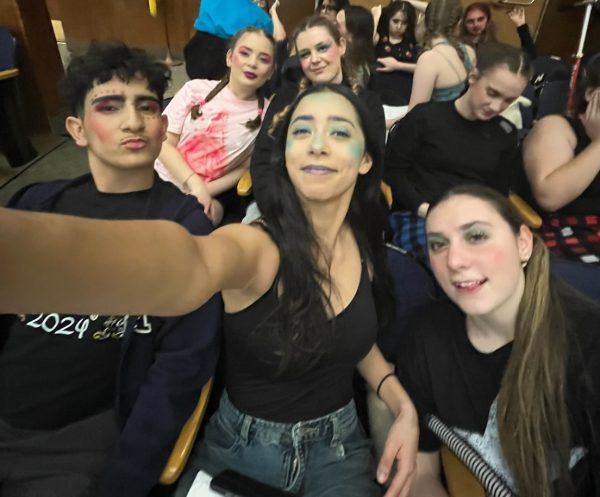
What do you think made the characters in this show so hard to portray?
D: SpongeBob is an iconic show with a Cast of highly recognizable characters. Our challenge was to put our own spin on these characters while preserving the nostalgia that makes them so beloved.
How did you keep a balance between portraying a cartoon icon while still adding your own flair- especially for someone like Squidward?
D: Luckily, Squidward and I have a lot in common- we’re both easily annoyed, play the clarinet, and work in fast food jobs that don’t treat us well. Before starting this, I envisioned a storyline where Squidward still retains his classical traits, but at his core, he’s just like anyone else- someone with a dream who’s constantly criticized by those around him.
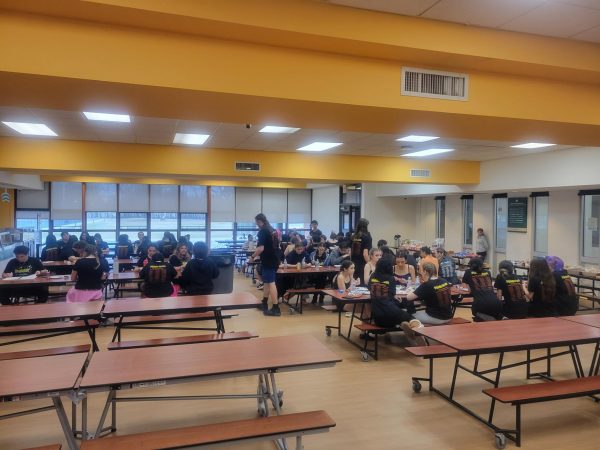
Crew
The build Crew was run by physics teacher: Mr. Rosenzweig. This was Mr. Rose’s 11th show as advisor for the set, and he collaborated with the Crew members to bring Bikini Bottom to life. Additionally, the Stage Manager (student leader of Crew that runs the show from backstage) was senior Jamie Boch. Jamie has been on Crew for every show of her high school career and has seen many different types of shows- and the challenges that came with them.
What has been the biggest challenge for Crew this show?
J: The biggest challenge for Crew was the amount of smaller props and working with Mt. Humongous [giant wooden mountain]. SpongeBob requires a ton of smaller props during the show and although each Cast members’ individual props were their own responsibility, we still did our best to help manage them. Working with Mt. Humongous was one of the most difficult set pieces to work with because of its height. Moving it while Sandy and Spongebob climbed it during “Chop to the Top” required extra hands on the actual set and more behind the scenes help to make sure everything ran smoothly and no one got hurt.
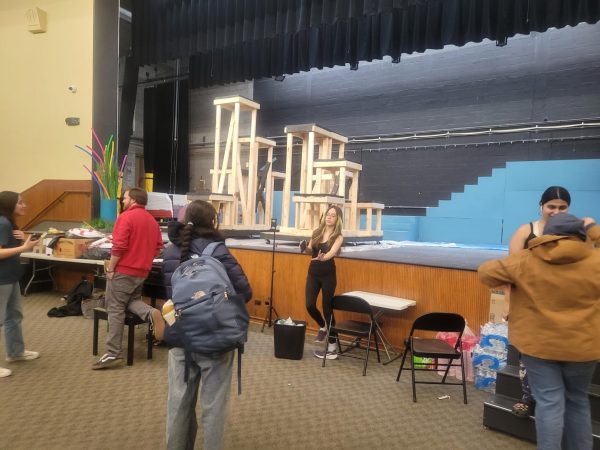
Arguably, Crew is the group that really made this show feel like SpongeBob. Mr. Rose knew that and designed and built a set to fit this show’s unique setting.
This show required a different sort of ambiance than ones in the past. How did you and Build Crew make a set that was not only functional but represent an underwater town as well?
R: A big part of the SpongeBob world is that the citizens of Bikini Bottom use the waste tossed away by the surface dwellers (us humans). For example, Squidward lives in an old tiki head statue, the Chum Bucket is literally an old bucket, etc. To communicate this in the set we made an effort to bring surface objects undersea. Mt. Humongous was a pile of old cardboard boxes, and we had a giant flip flop floating beneath the sea. Another part of the ambiance came from the colors, sounds, and lights. The whole set was blue which
when overlaid with the actors in costume, moving lights, and bubble machines created a cool effect that the backdrop is always in motion like water would be. On top of that the creatures of Bikini Bottom are all characteristically unique from each other. Our sound team worked on that to make sure that each creature sounds as they might in the show.
Since this set and design were so involved, both Mr. Rose and Jamie had a lot to work on and manage every meeting.
What was the most important part of your job as Stage Manager?
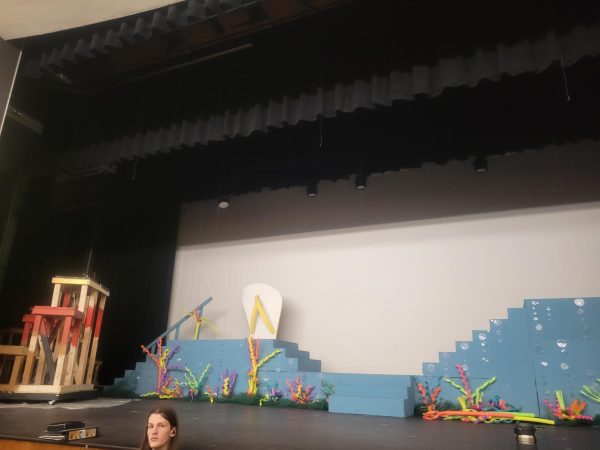
J: The most important part of my job as Stage Manager wasn’t being bossy or knowing EVERYTHING but doing my best to problem solve and having a good attitude. I’ve learned something new with each show I’ve done! Having a positive attitude made the entire process a lot more enjoyable for me. Theater’s supposed to be fun, expressive, and exciting; each show comes with its own hiccups but knowing and problem solving will help through any of those small situations.
Another ever-present challenge for Crew was the time constraint: with only two meetings a week, they had to work diligently to finish the set on time.
Crew finished the initial set very quickly. How did you motivate the students to produce a set Cast could work with so fast?
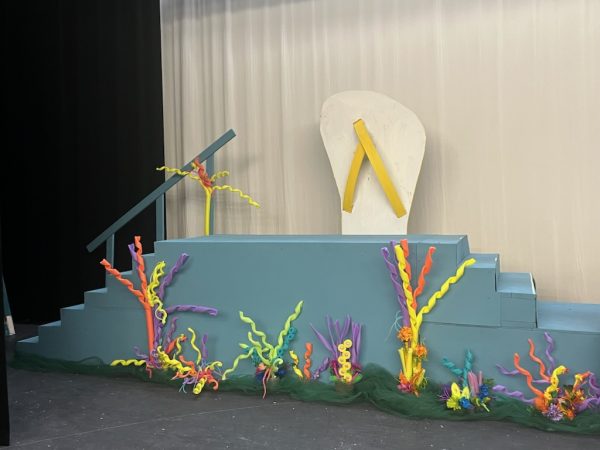
R: A big part of getting a set done in a timely fashion is having clear plans and dividing the work across our members. We tend to break the Crew up into teams to take on all of the different projects so that at any one point in time, multiple set pieces are being built. We obviously had a large static set backdrop which took much of our time and resources (stairs!), but we also had a full boat for the Krusty Krab, and so many other small things. A big part of my job was managing construction to ensure these processes didn’t interrupt each other. A major incentive for us to move quickly was to ensure the Cast had time with the set so they could rehearse their choreography in context (which was super involved). That said, the Crew didn’t necessarily require any additional motivation from me, they just seemed to have a good time being together and building. So long as I do my job of making sure they don’t step on each other’s toes (which I like to think I have done), the set comes together naturally and quickly. Many hands make light work!
Costumes
This wouldn’t be a comprehensive behind-the-scenes of SpongeBob without mentioning the brilliant work that theater’s lovely Costume Designer Sue Schultz did. For 49 EPHS productions, Sue has worked to bring the characters to life through costumes, and with every show, Theater is immensely grateful for her time and effort. For this show, Sue had to create costumes for underwater sea creatures, sardines, pirates, sea anemones, and so many more intricate characters. As always, she never disappoints. Here is a group of female pirates that Sue costumed:

She continues to amaze us with every show, and the EPHS variation of Bikini Bottom wouldn’t be the same without the costumes.
Pit Orchestra
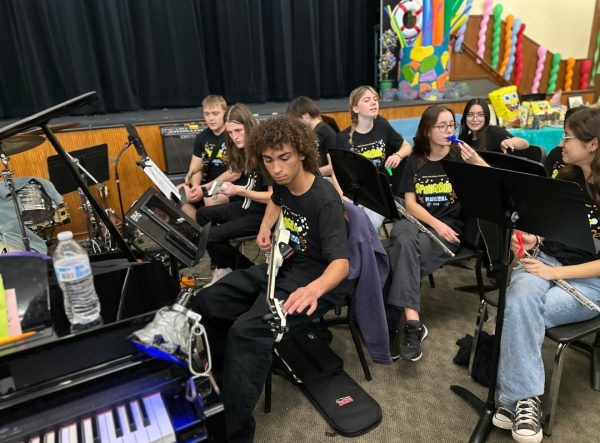
Perhaps the most important part of the musical is just that: the music. None of the EPHS musicals would be possible without the Pit Orchestra, led by the show’s Producer and EPHS Band Director: Mr. Rhoades. Mr. Rhoades has been at EPHS for 17 years, and he himself annually plays the piano in Pit. The music is one of the hardest parts of the musical to perfect, and the students need to balance that difficulty with their limited rehearsal time.
Musicals contain so much more music than just the songs actors sing. How did Pit handle learning and rehearsing so much challenging music within a relatively small period of time?
R: To put it bluntly: a lot of extra practice! Pit orchestra music is written for professional musicians: unfriendly key changes, extreme range, and even multiple instruments are needed for some of our students. We generally worked on song/dance numbers that required most of the Cast/ensemble first, then solo/small group songs, and then scene change/incidental music. Students were encouraged to listen to the original soundtrack recording so they’re familiar with the material outside of rehearsals. If you ask returning Pit members which EPHS music experiences helped them improve the most as a musician, most of them will tell you the combination of independence and practice required to play in Pit!
One of the most integral instruments to the Pit orchestra is the drum set. They’re important to tempo maintenance of the entire show, and they often give important musical cues to the performers. This year, junior Anthony Zenner played the set for the second year in a row. For him, as well as everyone else, this Pit music has not been easy.
What has been the most challenging part about this music for Pit?
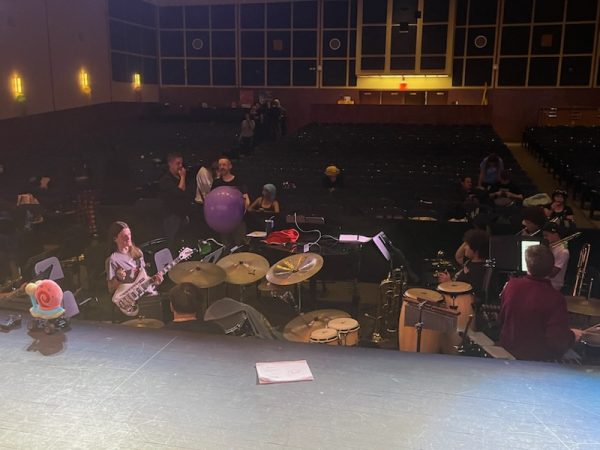
A: The music we play did not always align with what the Cast rehearsed. Sometimes we had to make cuts to songs because of the issue of aligning with Cast, which sometimes felt disappointing because some of the music that got cut out we worked hard on.
Was the SpongeBob music easier or harder than the music for Chicago?
A: This year’s production of SpongeBob was way harder than Chicago. Music-wise it’s a big step up from the jazz-influenced music, to now an all out pop-rock genre for SpongeBob. At least for me, I understood more of the music for Chicago and how the choreography aligned with my music.
In conclusion, the Cast, Crew, Pit, and Staff all worked incredibly hard behind the scenes to make SpongeBob happen. Their hard work paid off in a successful two-day, three performance run on March 14th and 15th.
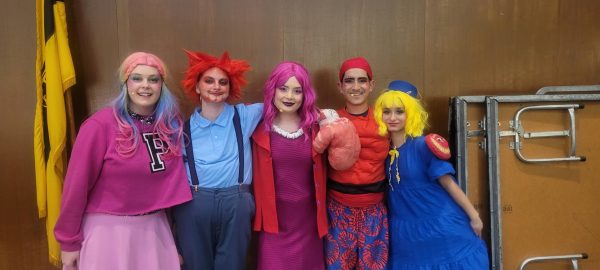
Works Cited:
- Boch, Jamie. Personal communication, February 26th 2025.
- McEachern, Grant. Personal communication, February 26th 2025.
- Rhoades, Kyle. Personal communication, February 27th 2025.
- Rosenzweig, Christian. Personal communication, February 26th 2025.
- Sol, Maiah. Personal communication, February 26th 2025.
- Solis, Dana. Personal communication, February 27th 2025.
- Zenner, Anthony. Personal communication, March 5th 2025.

